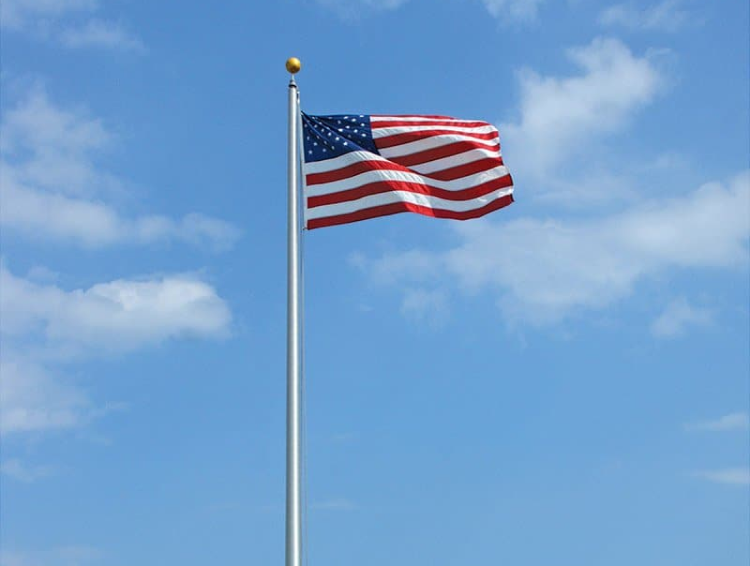Your Cart is Empty
5 Common Flagpole Installation Mistakes
3 min read
With one of the most anticipated patriotic holidays in America fast approaching, you might want to upgrade your flagpole. A flag is only as strong as its base. Installing a flagpole properly takes effort and can be tricky. A strong and sturdy flagpole will help you fly your beautiful American flag with pride. It’s also vital for avoiding damage to the landscape and surrounding structures.
Flagpole Installation Considerations
Flagpole installation requires careful planning and execution to ensure the flagpole is secure, stable, and compliant with local regulations.
It’s important to know that it’s easier to set up the flagpole correctly in the first place than trying to fix the damages later! Avoiding common installation mistakes is essential to ensure that your flagpole remains in good condition and that your flag is displayed with honor and respect.
Here are a few common mistakes you should avoid to get it right the first time around.
Check them out!
1. Choosing the Wrong Flagpole Location
Choosing the correct location is the first step you need to take to install a sturdy flagpole. If you install the flagpole too close to structures, power lines, or trees, it can be dangerous. It’s more likely to cause damage to these places especially if you live in an area that’s really windy. You need to consider the base of your flagpole as well to make sure it doesn’t get uprooted.
You should also check the soil conditions in your area as different soil types require different anchoring methods.
Another mistake made with flagpole installation is failure to check local regulations. Before you choose your flagpole location, it is vital that you find out the regulations regarding flagpoles from your local government or homeowner’s association. All flagpoles should adhere to the height, location and flag restrictions.

2. Finding the Right Flagpole
The strength of the pole is an important thing to consider before installing it. If you’re installing it in an open area it’s likely to face strong winds. A sturdy one-piece flagpole design is more suited to open and windy areas. Structures and trees around the area can partially block some wind. In that case, you can get a two-piece or telescoping flagpole.
3. Inadequate Flagpole Foundation/Base
Just drilling a hole in the ground and setting the pole in it isn’t enough to keep it upright. You need to create a larger hole that’s deep as well as wide. The flagpole foundation should be deep and wide enough to provide stability and prevent settling.
After installing the pole, the hole needs to be filled with enough cement to make sure it’s set properly. This’ll help prevent the pole from toppling over or uprooting the base.
An easy way to calculate the size of the base hole is to measure it at about four times the diameter of the flagpole itself.
4. Misplaced Parts
A flagpole doesn’t just come in one piece and often has additional parts, including an array of fastenings. Some models even have extension pieces for different extra features. All the parts of the pole need to be assembled before it’s set in the base hole. A missing piece will weaken the structure of the entire flagpole.
5. Damaged Structure
Before installing any flagpole, you need to conduct a proper inspection of all the parts as well as the basic pole structure. Any dents or cracks need to be addressed before you can set it up.
Sometimes the collar or the rings of the fastenings get bent during transportation, which needs to be replaced for proper assembly. It’s also important to schedule the installation immediately after the pole arrives to prevent any damage while it’s lying around.
Get your American Flagpole today
Federal Flags has been the premium supplier of top-quality and durable American flags for sale since 2002. Call us today for flags of all sizes, custom vinyl banners, residential flagpoles with internal and external halyards as well as various outdoor marketing supplies at affordable prices!
Leave a comment
Comments will be approved before showing up.




